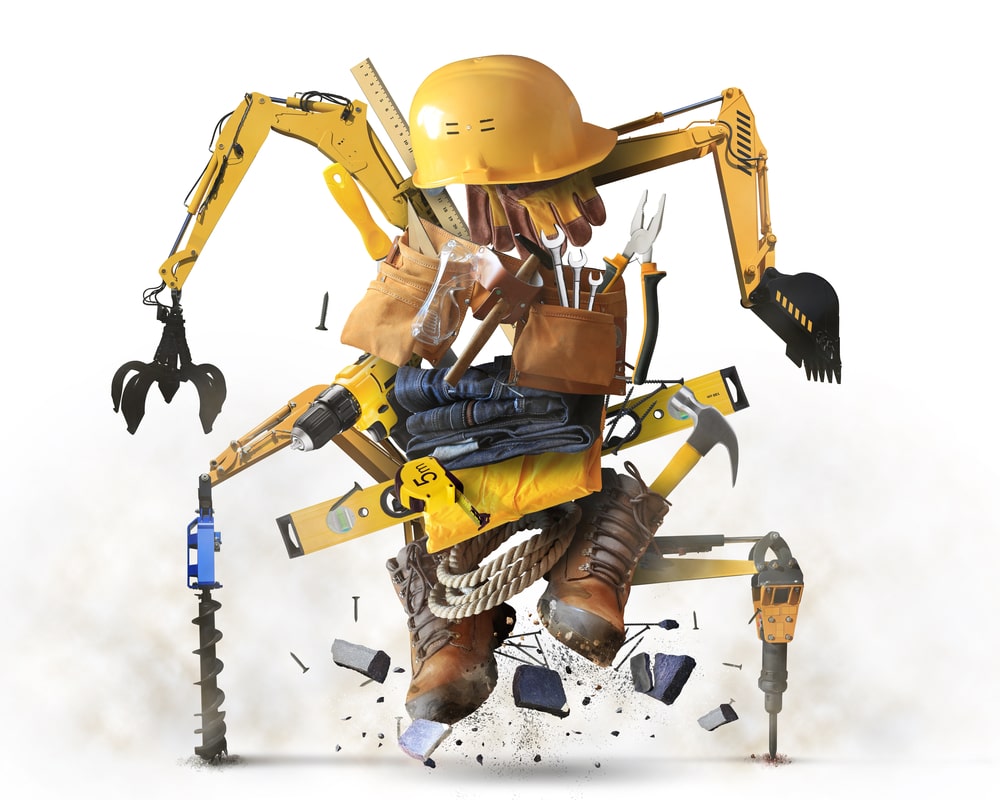News - Construction News
Robotics signals a new reality for construction – upskill or be left behind

In the last decade, the wider field of robotics has witnessed a significant uptake of robot technology in construction, whether in the form of automation of controls on construction machinery, the deployment of quadruped robots like Boston Dynamics’ Spot, or the use of pre-programmed robotic layout solutions. The market for construction robotics was valued at $2,450.7 million in 2019 and is expected to reach $7,880.3 million by 2027.
Robotics in the construction industry has enabled companies to implement lean practices, increase efficiency and reduce waste. Its implementation signals a change in the economics of construction – moving away from a trade skills-based industry and more towards one where trade and tech skills go hand in hand.
Workers will need to bridge disparate skill sets
As robotics become more heavily used to take on dull, dirty and dangerous tasks in the construction industry, workers’ skills need to progress such that they can manage high level technical activities and understand the limitations of construction robotics, identifying any discrepancies in the process.
Skills increasingly required by construction workers will include the operation and maintenance of robots, as well as the ability to optimise work processes to match the robot systems’ capabilities and limitations. Some workers will also need to be familiar with BIM solutions and datasets being used to guide the robotic machines and provide situational intelligence. And perhaps the most important skill of all will be flexibility and the ability to adapt their roles to new technologies. Even the most intuitive robotics tools still require workers to adapt to new practices and learn new skills to make the most out of these systems and maintain a safe and productive environment.
Upskilling workers is the only solution
All robotics systems have a unique set of capabilities and limitations. Upskilling can start from teaching the basic capabilities such as operating the robot (start/stop, charge, guide, payload etc.), planning based on understanding the system capabilities (optimising work processes, load size, site conditions, operating time, production rate), maintenance of the robots, to more complex capabilities like programming a robot, and operating and coordinating a robotic fleet.
Employers can provide competency assessments when new workers approach the construction site with more experienced, qualified workers providing demonstrations on how to operate robotics systems and then assisting new employees working with these tools. By implementing an in-house training scheme, combined with self-study, employers can support workers to operate robotics tools safely and efficiently.
Operating construction machinery requires training and licensing. With more complex robotics tools, like autonomous compactors, excavators, dozers and ATLs, slowly making their way onto the market, employers can harness AI-based simulation tools to upskill workers and build competencies in high-fidelity environments.
The use of simulation also has huge potential for ensuring high quality training and saving time compared to manual training. Through simulations, workers can test perception, localisation, cognition processes and sensor combinations in real world conditions. Simulation systems can be designed with progressive levels of complexity and can introduce scenarios that are difficult to experience in real life, such as hazardous weather conditions, boundaries of the system capabilities, optimisation process and maintenance, to ensure the worker can manage the robot safely under any circumstances. Simulation can also be used for planning and optimising site activities, which is especially relevant when managing a mixed fleet of robots where complex coordination is needed.
A warning for industry – invest in upskilling, or fall behind
Upskilling employees not only gives construction companies the opportunity to build a more competent workforce that sits at the forefront of the industry, but pushes organisations to remain resilient to change, adapting to new industry developments and growing with the sector as a whole.
Moreover, looking to the future, companies can also use the technological metamorphosis of the construction industry to their advantage when hiring. There is a real opportunity for construction companies to attract the top tech talent needed for a digital future.
Article submitted by Aviad Almagor, Vice President of Technology Innovation at Trimble
If you would like to read more articles like this then please click here.
Related Articles
More News
- New £39Bn Social and Affordable Homes Programme
14 Jul 25
Hundreds of thousands of social and affordable homes, including 60% for social rent.
- UK Introduces New Trade Measures to Support Steel Sector
11 Jul 25
Steel producers across the UK will benefit from stronger trade measures from 1 July.
- Clean energy future to be ‘built in Britain’
10 Jul 25
The Clean Energy Industries Sector Plan comes into force to ‘build it in Britain’.






